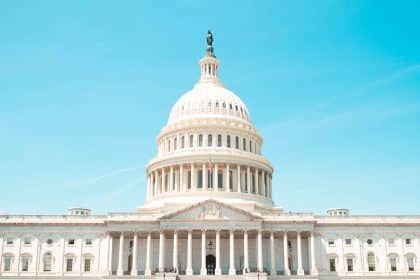One major aspect that was addressed by the new framework is the fight against illicit finance.
The United States White House, the official residence of President Joe Biden has released a new framework for regulating the crypto industry. The new guideline stems from the Executive Order (EO) that was issued by President Biden back in March, which directs the government agencies overseeing the crypto ecosystem to make an inquiry into the industry and prepare reports.
The newly published guideline borders on the 6 major pain points highlighted in the EO which include consumer and investor protection; promoting financial stability; countering illicit finance; US leadership in the global financial system and economic competitiveness; financial inclusion; and responsible innovation.
Considering its robust and comprehensive nature, Brian Deese, Director of the National Economic Council, and National Security Advisor Jake Sullivan expressed optimism that the new guideline will help position the United States as the leader in digital assets innovation in the world.
One major aspect that was addressed by the new framework is the fight against illicit finance. It is no news that the digital currency ecosystem is highly susceptible to financial fraud, and this is doing a lot of harm to investors, and the broader financial ecosystem stability.
“The President will evaluate whether to call upon Congress to amend the Bank Secrecy Act, anti-tip-off statutes, and laws against unlicensed money transmitting to apply explicitly to digital asset service providers — including digital asset exchanges and non-fungible token (NFT) platforms,” according to a White House fact sheet.
Amongst the major things that are being explored, there are pushing the US Congress to raise the penalty for illegal money transmitting services. The Feds may also work to recreate the measures by which identified frauds in the crypto ecosystem can be prosecuted in the regions where they are nipped.
“Treasury will complete an illicit finance risk assessment on decentralized finance by the end of February 2023 and an assessment on non-fungible tokens by July 2023,” the fact sheet detailed as it concerns the next steps in enacting this enforcement rule.
White House Crypto Agenda May Be Strengthened by the Digital Dollar
In the entire narrative presented by the published guideline, the White House is keen on becoming more proactive with its crypto agenda with the launch of the Digital Dollar, its Central Bank Digital Currency (CBDC).
The Digital Dollar will be targeted at stemming the dominance of stablecoins which have proven to be unreliable in helping to maintain financial stability. The collapse of TerraUSD, an algorithmic stablecoin, has put regulators on the edge and thus fueling the renewed interest in fast-tracking the CBDC’s development.
“You wouldn’t need stablecoins; you wouldn’t need cryptocurrencies if you had a digital U.S. currency,” Powell said. “I think that’s one of the stronger arguments in its favor.”
The crypto guideline is one of the United States government’s most direct steps to bring the much-needed regulation into the growing digital currency ecosystem.
next